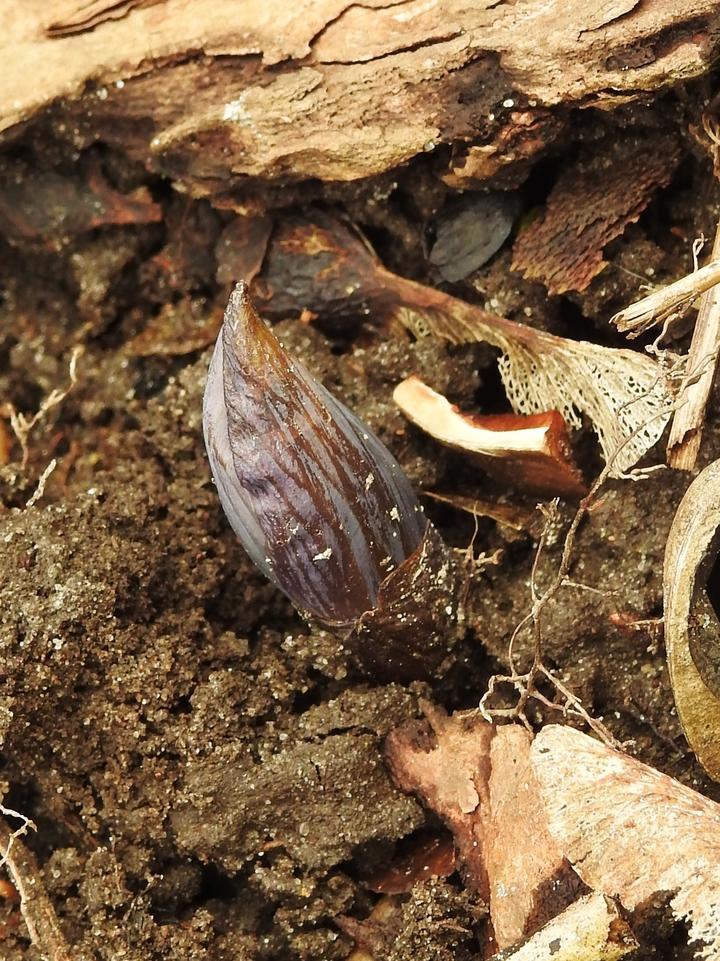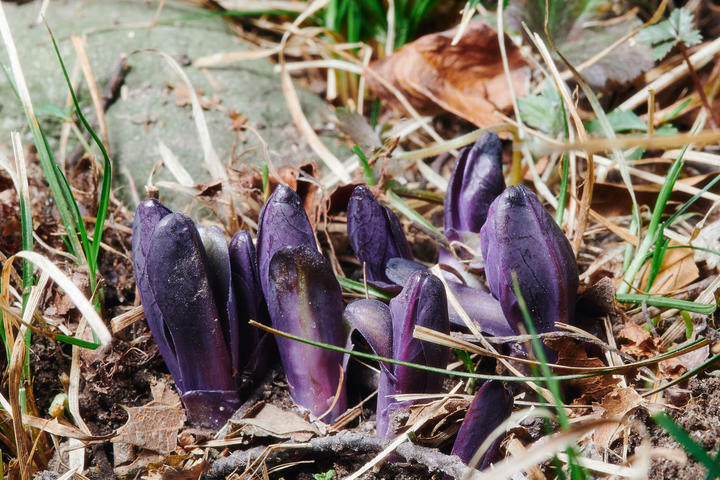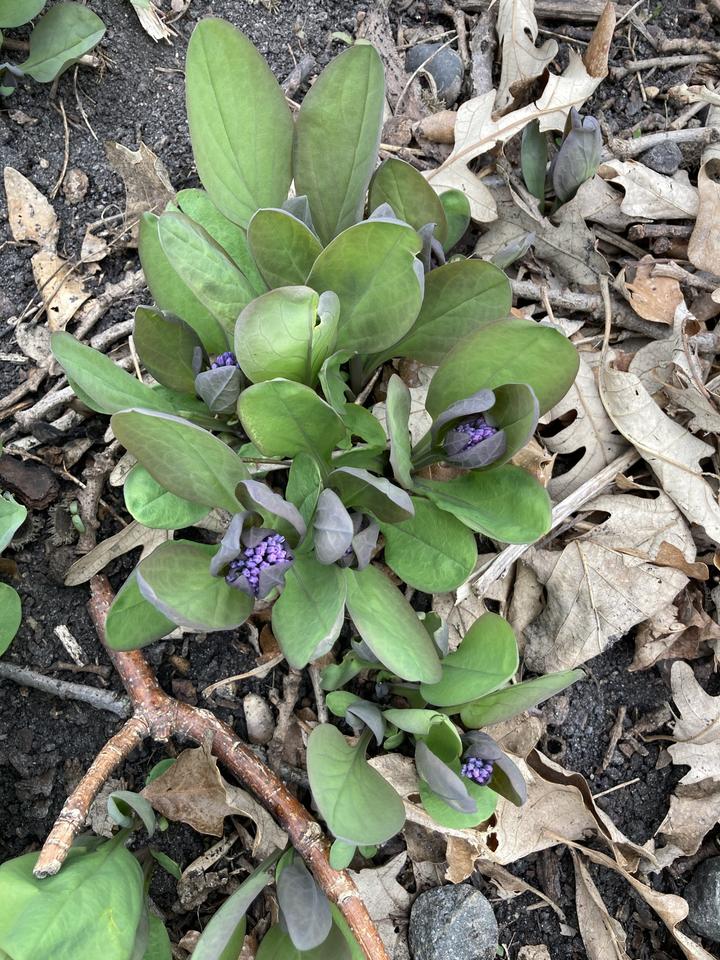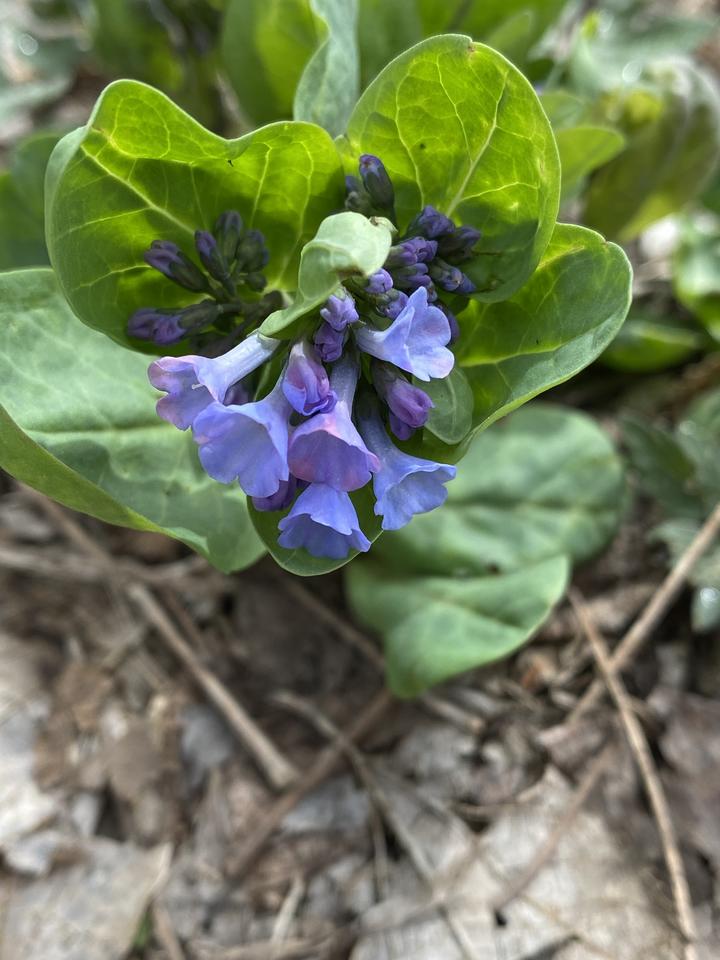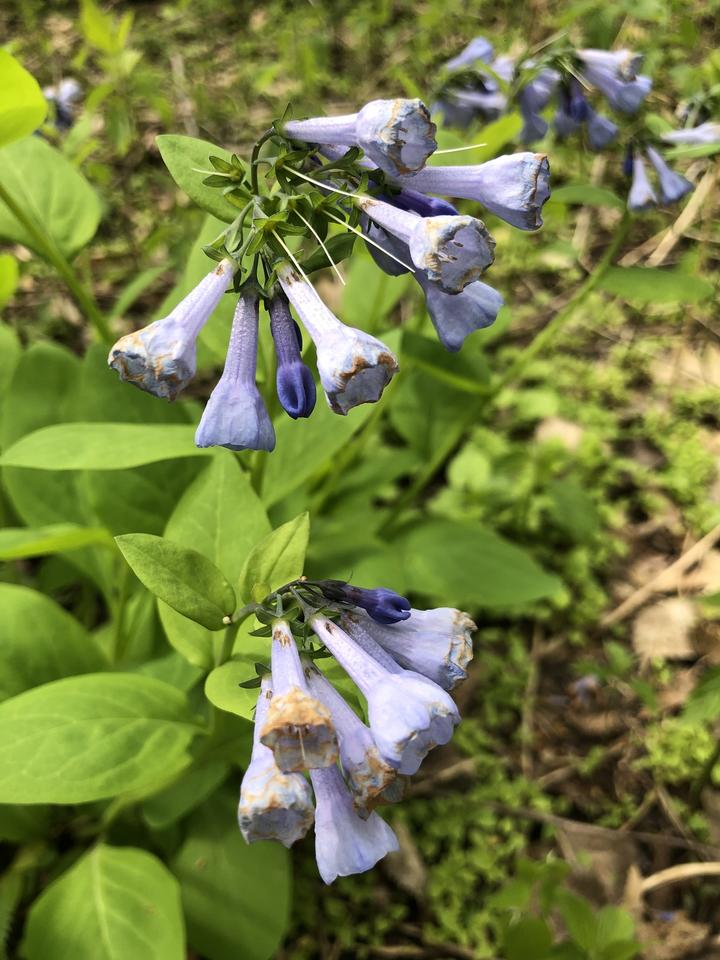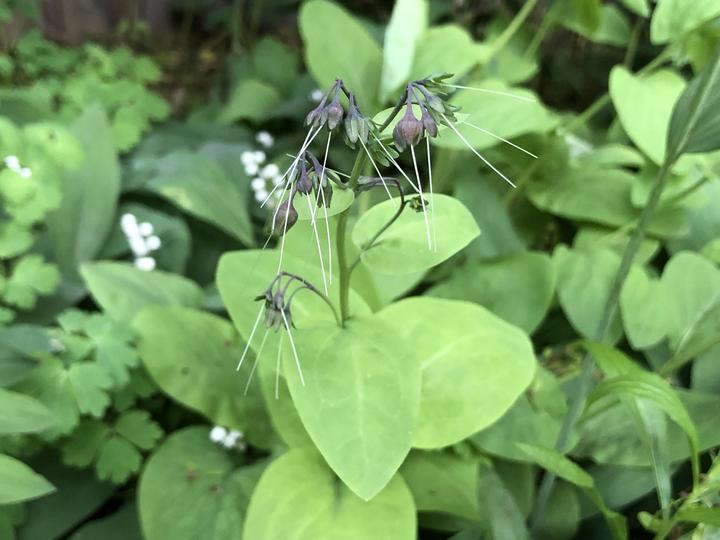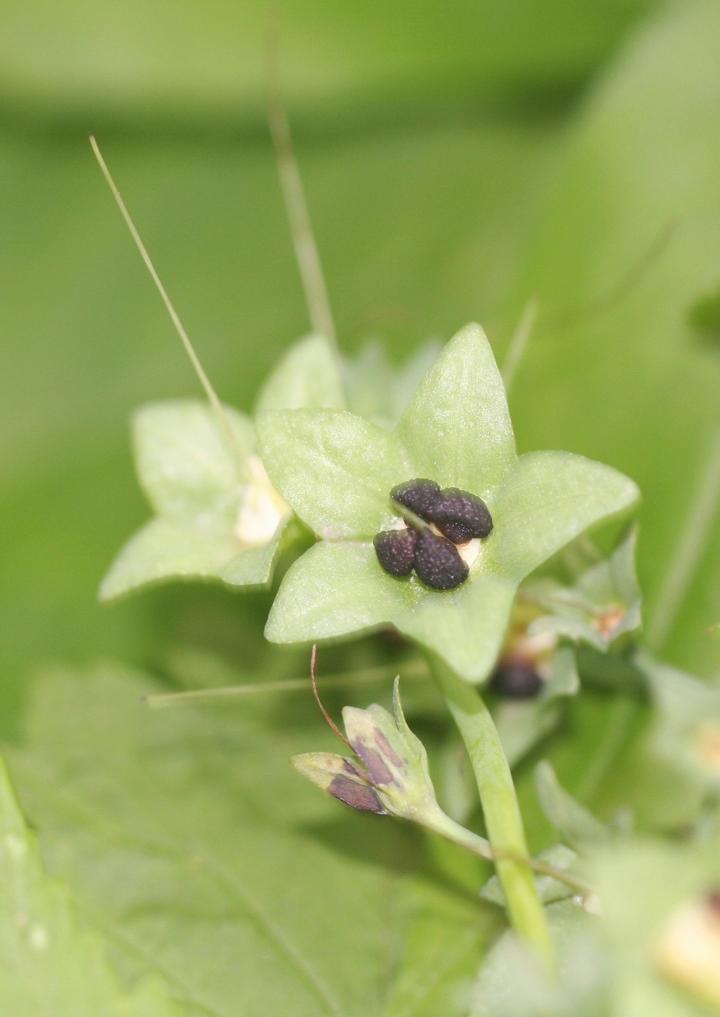More names for this plant
The Dakota and Anishinaabe were among the earliest people to name Minnesota’s plants and animals, as well as to understand them in relation to Minnesota’s climate and seasons. Those original names are still in use, and several are included on the Season Watch website. However, complete translations were not available.
Latin (or scientific name): Mertensia virginica
The scientific community has a convention of assigning agreed-upon Latin names to every kind of organism. Using scientific names helps people communicate confidently about the same organism and organize lifeforms based on how closely related they are.
More commons names: Virginia cowslip, white mertensia
Page contents
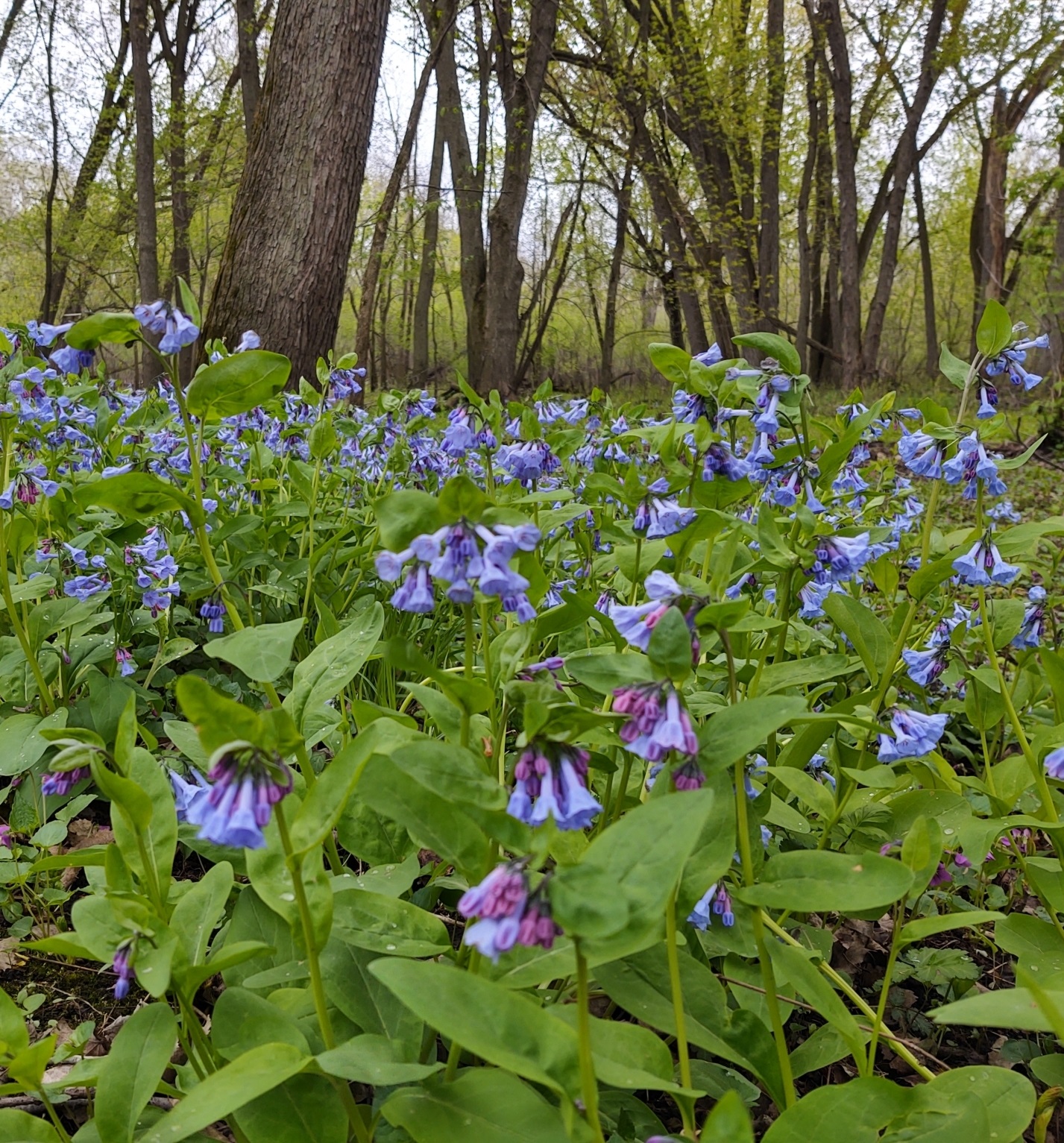
May 10, 2020, Mower County, Minnesota
Photo © jenniferdavis32, some rights reserved (CC-BY-NC)
iNaturalist observation
About Virginia bluebells
- The Virginia bluebell is a herbaceous perennial plant that grows twelve to thirty inches tall.
- Virginia bluebells are a spring ephemeral meaning that they have an early and short growing season.
- The Virginia bluebell’s light blue flowers grow in slightly drooping clusters and typically bloom in either April or May.
- Its flowers are pollinated by a variety of insects, especially by bumblebees that collect their nectar.
- These flowers are found throughout Minnesota but are especially common in the southeast corner of the state.
Visual guide to phenology
Watch for the appearance of leaves, flowers, and fruits. Take notice of when flowers open and fruits ripen.
Note to observers
This page explains general clues to watch for when observing Virginia bluebells phenology. However, this page does not explain how to identify this plant or collect data in a standardized way.
- For help with identification, see Minnesota Wildflowers.
- For guidance on collecting data, see Nature’s Notebook.
Graphs and historical data
Note: The Orientation Center provides a map, as well as information on reading graphs; interpreting summary statistics, who collected the data and how; and how to download datasets for independent exploration.
Flowering
- Earliest: April 17 (occurred in 1987)
- Average: May 3
- Latest: May 15 (occurred in 1979)
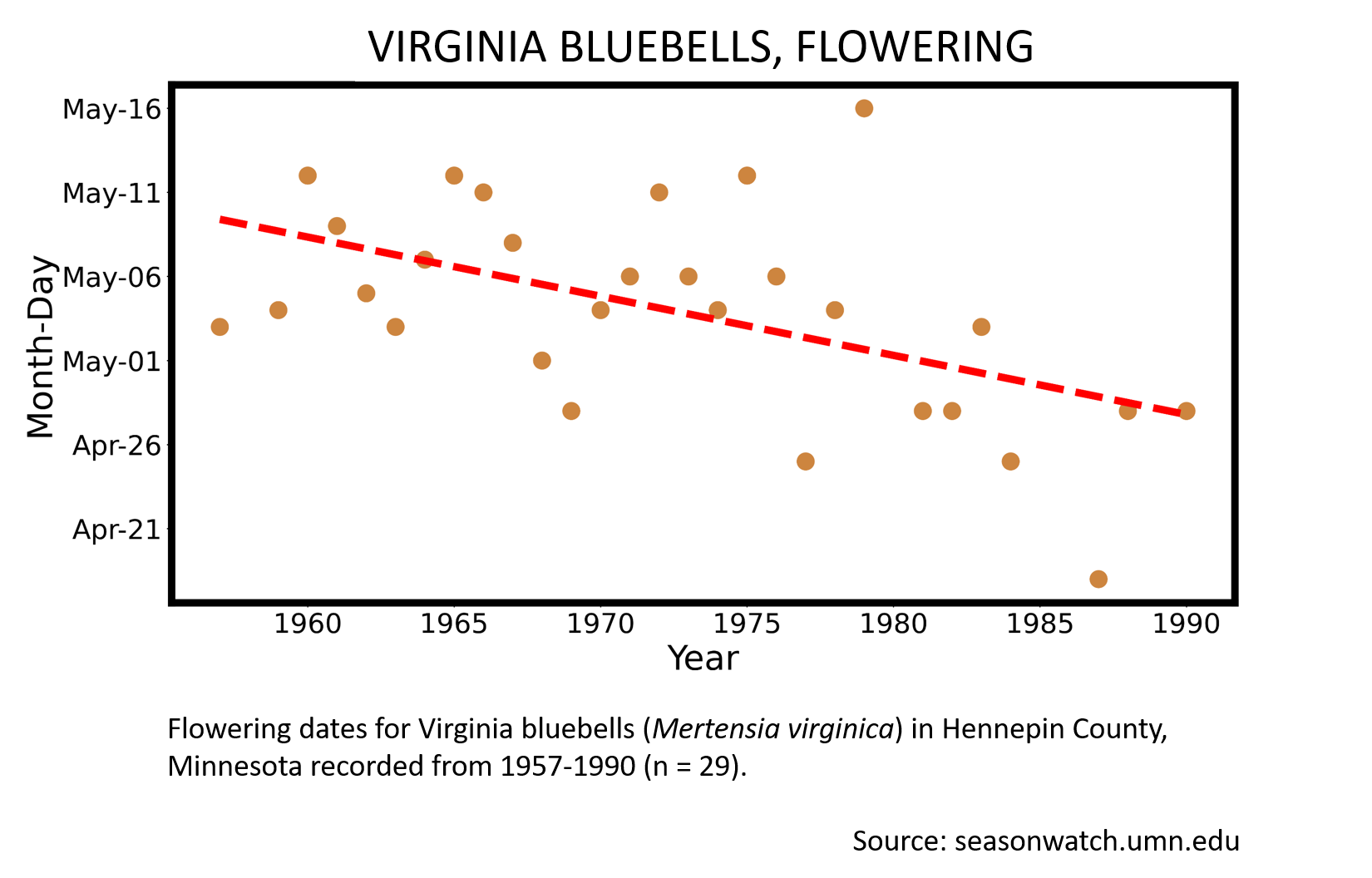
Last flower
- Earliest: May 1 (occurred in 1969)
- Average: May 29
- Latest: June 10 (occurred in 1979)
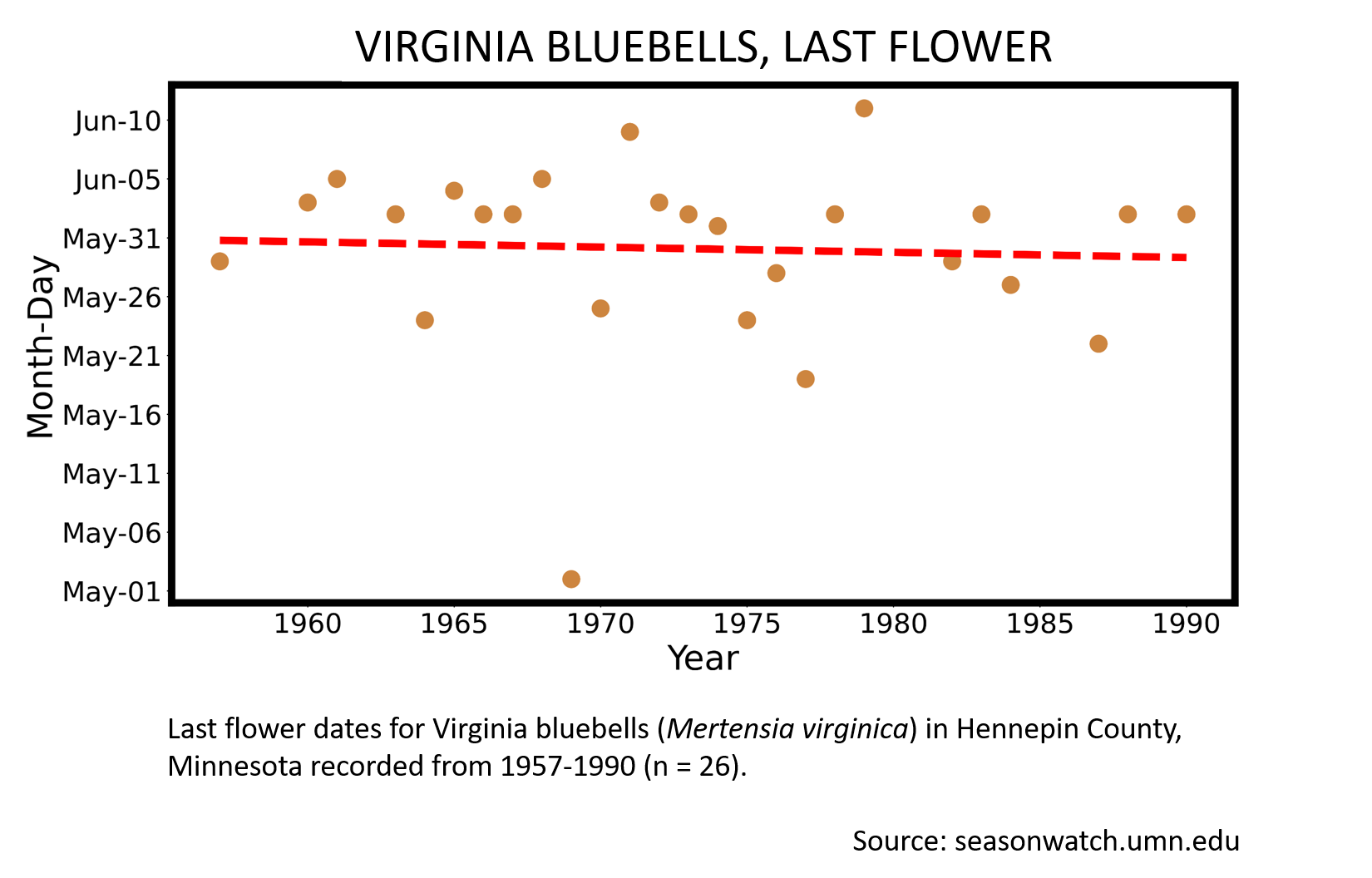
More resources
Keep exploring Season Watch
Keep exploring Season Watch
Co-author: Lynsey Nass, Minnesota Master Naturalist
